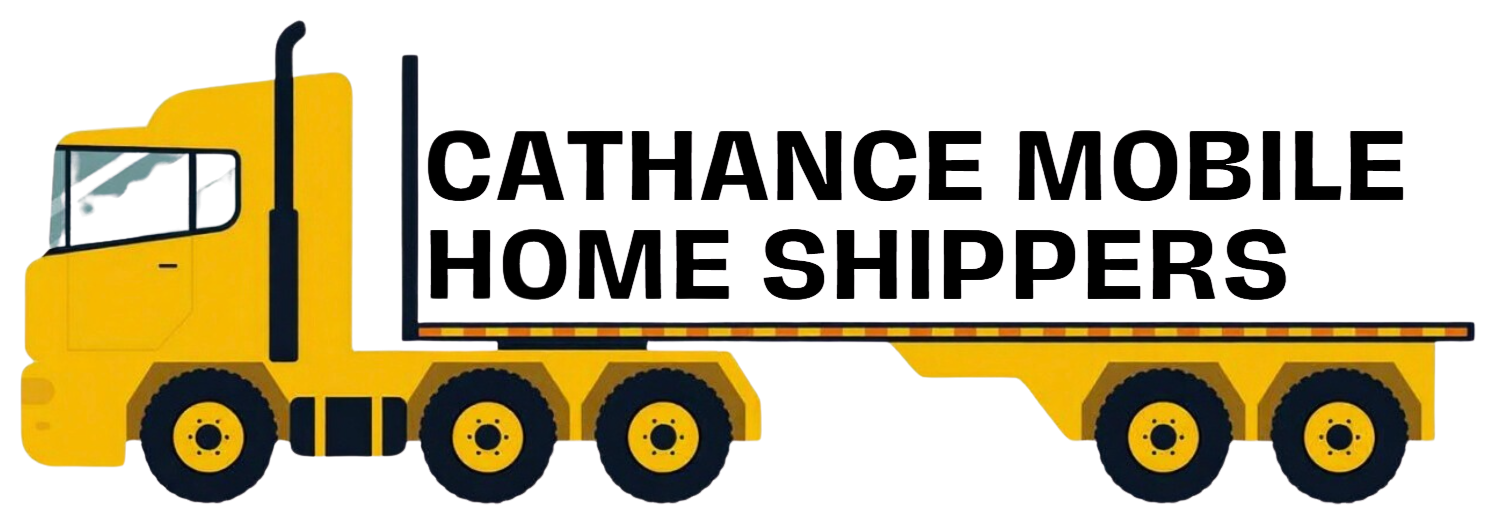
info@cathancemobilehomeshippers.com
Menu

We move shipping containers between yards, ports, job sites, and residences with the right equipment and a compliance-first plan. Whether your unit is empty or loaded within legal axle and gross weight limits, our team verifies the specifications, selects the safest loading method, and coordinates any special handling at origin and destination. Because site access and placement often drive the method, we’ll discuss turning radius, ground conditions, overhangs and lines, and your desired final position before we dispatch a truck.
Loaded vs. Empty: We can move loaded containers when weight is verified and within legal axle/gross limits; disclose load distribution and center-of-gravity.
Turning radius, ground conditions, overhead lines/trees, approach grade; we plan a legal route with needed permits.
Twist-locks or heavy-duty chains/binders to protect the frame and maintain balance
Professional drivers follow route and oversize rules where applicable.
Ground, blocks, footings, or chassis as specified; final positioning checked with client on site.
We operate to DOT securement standards, document weight verification for loaded moves, and inspect gear before every trip. When pilot/escort vehicles or special permits are required, they’re coordinated in advance. Our insurance certificates are available on request, and your Bill of Lading will spell out responsibilities and timelines in clear language. Throughout the job, you’ll have a single point of contact who can give you real-time status and answer questions quickly.
Yes. We move empty containers and loaded containers when the weight is verified and within legal axle and gross limits. We’ll ask for documentation and details on load distribution so we can choose the safest equipment and route.
We regularly transport 20-foot and 40-foot containers, including standard and high-cube variants. We also handle specialized units such as refrigerated (reefer) and open-top containers when the job’s requirements and route allow.
Method is driven by weight, site access, and placement needs. Tilt/roll-off is efficient for empty or lightly loaded 20-foot units and allows ground placement without extra equipment. Flatbeds and step-decks are best for heavier loads or long-haul trips; those typically require a forklift or crane at each end. When precise placement or obstacles are involved, we coordinate a mobile crane and manage rigging and safety zones.
In many markets, yes. We work within appointment systems, chassis requirements, and yard rules. If demurrage or detention could apply, we’ll review timelines and options with you in advance to minimize extra fees.
We’ll ask for container size and type, verified weight and load description, pickup and delivery addresses, desired placement details (ground, blocks, footings, or chassis), site access notes such as gates, trees, wires, and turning room, and your preferred dates or port appointments.
Depending on the trailer and container, we use twist-locks or heavy-duty chains and binders at the corner castings. Drivers perform pre-trip and en-route checks, and we follow DOT securement standards and speed limits suitable for the configuration.
Yes, provided we have the right gear and safe access. With a crane and proper rigging—or careful tilt placement when feasible—we can land the unit accurately. We’ll ask for footing layout, ground bearing capacity, and any clearance issues to plan the setup.
Distance and timing, container size and confirmed weight, loading and unloading method (tilt vs. forklift vs. crane), site conditions at both ends, and any permit or escort needs drive the cost. If port or rail is involved, chassis, appointment, and yard charges may apply. Your estimate will detail equipment, assumptions, and any potential standby time.
We can often schedule within a short window, but availability depends on permits, equipment, and any third-party services like cranes or forklifts. Port appointments can also affect timing. Sharing flexible dates helps us secure an efficient slot.
Hazardous materials and certain high-risk contents require special approvals or are not permitted. Overweight or off-center loads may need repacking to comply with axle and gross limits. If you’re unsure, tell us what’s inside so we can advise safely.
Ensure the ground is firm, level, and accessible, with adequate turning radius and no low branches or wires. If a forklift or crane is planned, confirm the capacity and setup space, including outriggers and safety zones. If we’re placing on blocks or footings, have the layout ready and clear of debris.
For oversize configurations or certain routes, daylight-only and weather thresholds may apply. High winds, ice, or poor visibility can require a pause. If conditions are unsafe or non-compliant, we will reschedule to the next safe window.
We carry appropriate transport and liability coverage for the container and follow documented securement practices. Coverage for the contents varies and may require your own cargo insurance depending on the job. Your contract and Bill of Lading outline responsibilities and the claims process; we recommend photographing the container interior before sealing.
A deposit typically secures the date and any third-party resources like cranes. The balance is due according to your agreement, often at delivery. Weather or permit-related delays are handled without penalty; client-initiated changes may incur standby or re-mobilization charges, which are clearly defined in your quote.